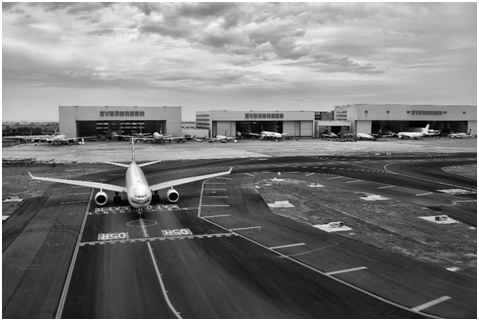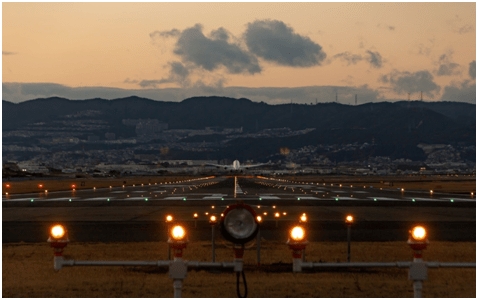
The airport is also referred to as an air terminal, airfield, or aerodrome. It’s a site and installation where aircraft or airplanes takeoffs and land.
Airports typically have paved runways and maintenance services. It acts as a terminal for cargo and passengers to move from one place to another.
Evolution of Airports
Distance Covered
Although the complexities and requirements for flying have evolved over time, they’re far stricter now than they were ever before.
Did you know that before World War II the distance covered between landing and takeoff was not more than 600 meters? We’re talking about the passenger-transport airplane here.
However, there were additional clear areas offered in case of bad weather runs or blind landings but still, the total distance covered by the airplane hardly ever exceeded 500 acres.
After the launch of heavy monoplanes like the Douglas DC-3 in the late 1930s, large distances were covered during takeoff and landing.
But even then, the pre-war airplanes continued to operate in New York City, London, Berlin, and Paris airports that were in proximity to city centers. The reason behind their demand was that these transport airplanes were lighter to fly and paved runways were still uncommon.
London airport called Croydon and Paris’s airport known as Le Bourget,are a few examples of airports that operated solely from glass strips.
Socializing
Previously, airports were a major source of leisure activity and attracted more visitors than passengers. During 1939 New York City’s La Guardia Airport attracted around 250,000 visitors every month, which makes 7,000 daily visitors.
In comparison to these figures, the maximum number of passengers was only 3,000 every day. Similarly, Berlin’s airport called Tempelhof was reported to attract 750,000 visitors during 1929. It also had a restaurant placed on the airport’s rooftop that accommodated 3,000 customers.
All this information shows how prewar airports were more like a social center than a passenger terminal. Their designs, customer service, parking spaces, and observation decks all reflected that these airports were used more for socializing purposes and less for travelling.
Indeed, the need for airplanes and passenger demand wasn’t a priority for the airports at that time.

The Present
Nowadays, over 100 airports are operational worldwide and carry around 10 million passengers every year. The demand for passenger transport has increased substantially over time.
Dozens of airports now carry millions of passengers yearly ranging from Hartsfield Atlanta International Airport in Georgia, US to London Heathrow Airport in the UK.
The largest airports around the world have a strength of over 100,000 employees each. They are extremely complex entities in terms of their physical facilities, the organizations associated with them, and the services they offer.
If you’re looking for a less complex and comfortable flying experience in the current era, reach out to us and we’ll offer you the most relaxing and luxurious airport transfers along with business executive chauffeurs in Southampton. Contact us for more details.